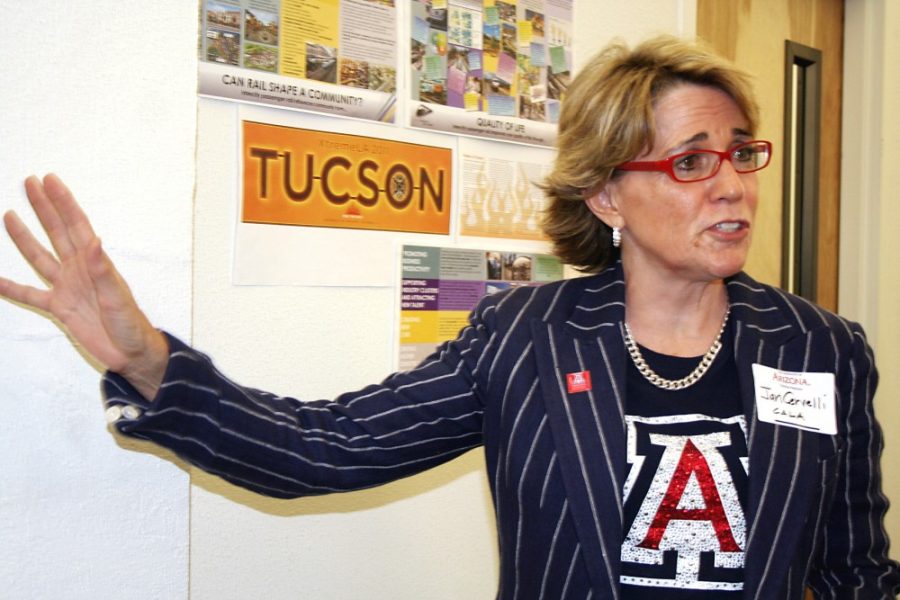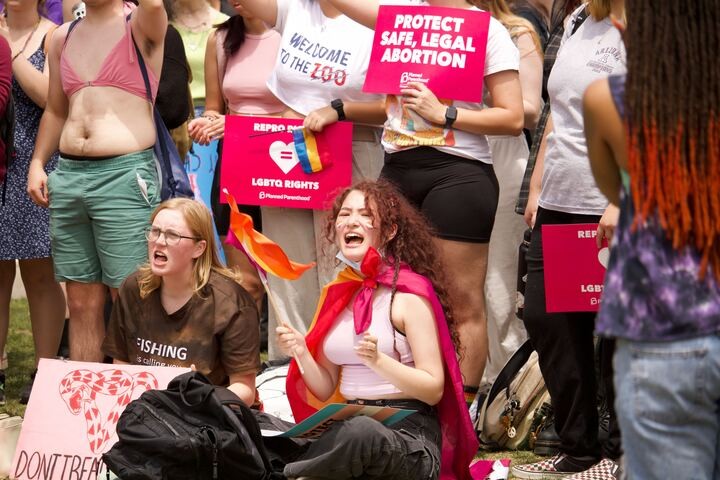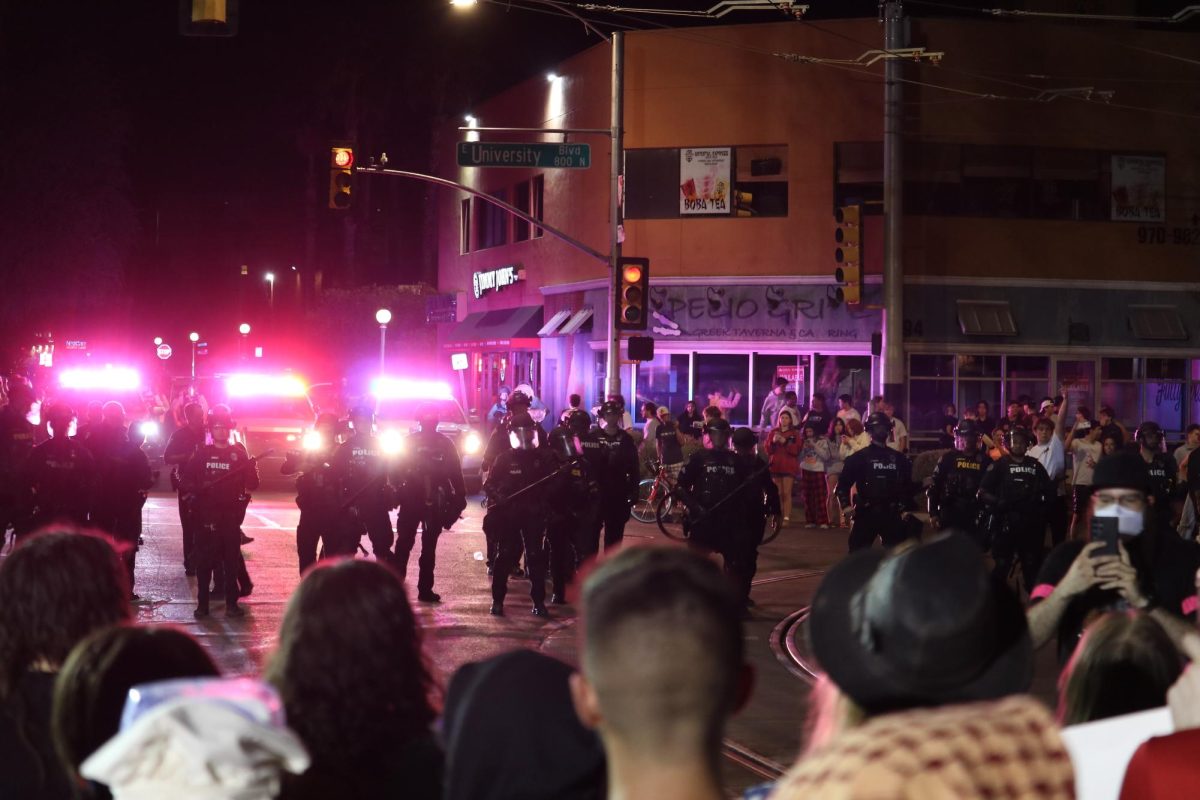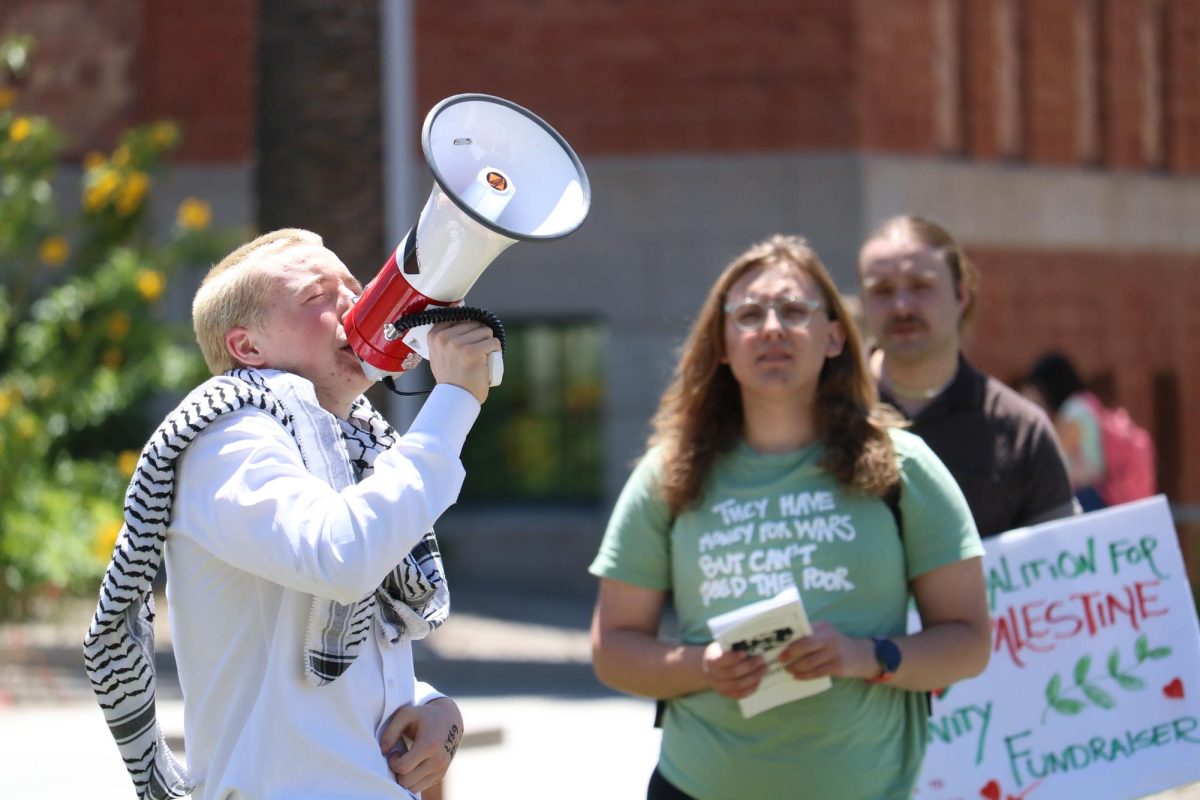The opening of UA Downtown was celebrated with live music, hors d’oeuvres and a surprise appearance from mascots Wilbur and Wilma Wildcat on Saturday.
UA Downtown is located in the Roy Place building, which existed as a Walgreens from 1956 to 2003 and has been restored to its original Spanish facade. The building will provide classrooms to students in the School of Geography and Development, the College of Architecture and Landscape Architecture and the College of Social and Behavioral Sciences.
The building will give students the opportunity to work with local city agencies and private agencies, said Janice Cervelli, dean of the College of Architecture and Landscape Architecture.
“It’s not just the government, it’s a lot of these partnerships, having the students here actually engaging in that process and giving ideas is an exciting learning opportunity for them,” Cervelli said. “Studying it from a distance is a whole different thing than sitting in the meeting.”
The UA research space downtown as a way to expand the UA’s campus beyond its physical borders and provide students with more opportunities for hands-on learning experiences. John Paul Jones III, dean of the College of Social and Behavioral Science, said he wants students to use the building just as they would a UA space. The 10-minute commute makes it easier for faculty and students to utilize both UA campuses.
“We’re starting to build sort of a group of think tanks and university facilities downtown, which I think is really the future for both the City of Tucson and the University of Arizona,” said Brint Milward, director of the National Institute for Civil Discourse and director of School of Government and Public Policy. “The more we develop the better.”
Rebecca Kopp, who is pursuing a master’s degree in Public Administration and volunteered at the opening, said UA Downtown is making use of space downtown that gives students access to government officials and local non-profit organizations. The goal of UA Downtown is to further develop the UA’s campus and utilize Tucson’s resources, she said.
“Food, Paper, and Alcohol: an Exhibit on Downtown Tucson,” made by students from the College of Architecture and Landscape Architecture and artist and instructor Bill Mackey of Worker, Inc., opened along with UA Downtown. Although they are separate projects, the nature of the exhibit and its focus on the movement of people in a city, complemented the opening, Mackey said.
Mackey and his students spent the semester looking at issues downtown and in an urban environment in order to collectively come up with the exhibit’s theme of “distribution,” which was then narrowed down to food, paper and alcohol. Mackey said food, paper, and alcohol seem to be the key ingredients of what makes up downtown right now.
“There are a lot of restaurants, there’s a lot of office space, a lot of bars — they’re in use the most,” Mackey said. “The goal of the exhibit is for people to take a look at kind of very normal, under-the-radar processes, like how does food get to the city and how does it leave, and have people understand it more intimately and understand that it’s a complicated system.”
UA Downtown is a start to the UA’s growth and expansion both physically in Tucson and globally. The availability of resources and interactive learning will give students experiential knowledge unattainable in a university classroom, said Tim Finan, director of the Bureau of Applied Research in Anthropology.
“I would like to see the UA enhance its global mission, look at itself, at its international image to promote, to see itself as a global actor, rather than just a university for the U.S.,” Finan said. “We think that having this building here will give the appropriate enabling environment where we can promote this. It’s important that students don’t be isolated in this building, this building is a part of the university.”









